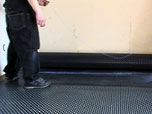 |


|

|
Click for Easy to
install subfloors

|

|
Click for information
on Tile Subfloors

|

|
Click for information
on laminate and
hardwood
subflooring

|

|
Click for information
on basement
subfloors

|

|
the ultimate
protection for
subfloors

|

|
Click for
testimonials on
protection of
subfloors

|

|
Contact us for
your subfloor
protection

|
|

 |
 |
 |
 |
 |
 |
 |
 |
 |
 |
 |
 |

| Page
1 Page
2 Page
3
Page
4
|
 Click
to go to page 1 Click
to go to page 1
to find out repairing a subfloor
Click to go to page 2
for information on installing a basement subfloor
Click to go to page 3
for information on installing subfloors
Click to go to page 4
to read about subfloor leak detection
|
 Basement Subfloor Tile Subflooring Laminate or Hardwood Subfloors Basement Subfloor Tile Subflooring Laminate or Hardwood Subfloors |
 |
|
When starting the installation of a new laminate, tile, hardwood, plywood, or any other type of floor on concrete, you can skip traditional concrete basement subflooring methods.
When considering to install tile, laminate, hardwood, ceramic, parquet, cork, bamboo or wood subflooring, ensure that your subfloor material protects your floors from concrete moisture damage. The following information on flooring and subfloors may help you with your basement subfloor decisions. Basement subflooring for all types of wood, ceramic etc must provide your family warm comfortable basement floors for now and into the future.
|
|
What is a Subfloor
 A subfloor is what's below your flooring materials. It is important that all flooring materials have protection against moisture damage. All basement flooring materials should have a subfloor that provides moisture protection. Moisture damage can quickly destroy your new flooring materials.
A subfloor is what's below your flooring materials. It is important that all flooring materials have protection against moisture damage. All basement flooring materials should have a subfloor that provides moisture protection. Moisture damage can quickly destroy your new flooring materials.
Some popular basement flooring materials are:
- Hardwood flooring materials
- Tile flooring materials
- Rubber flooring materials
- Stone flooring materials
- Bamboo flooring materials
- Vinyl flooring materials
- Laminate flooring materials
|
| Benefits of a Subfloor |
 |
"Imagine walking on a cold concrete floor with your bare feet", now imaging walking on the concrete floor with your shoes on."
More and more builders, in new home construction, are installing a subfloor under or over existing concrete floors. Not only does a subfloor raise the value of your home but it's also used to improve the basement living space. The latest trend in new home construction for subfloor applications are:
- Upgrading the basement living space into a home theatre area
- Converting garage space to living space
A subfloor will also protect your flooring materials from moisture damage. A  subfloor membrane is a quick and easy solution to protect you from all your potential flooring problems. Below are some benefits of a Superseal subfloor: subfloor membrane is a quick and easy solution to protect you from all your potential flooring problems. Below are some benefits of a Superseal subfloor:
- Traditional wood subfloor sleepers up to 2 ½ Inches -
 subfloor ¼ inch subfloor ¼ inch
- Provides drainage abilities
- Warms flooring materials by up to 30%
- Protects against moisture seepage
- Allows you to install basement flooring materials that you normally wouldn't be able to install on concrete
- Lengthens the life of your new flooring materials
- Increases the feel and quality of your home through foot fall absorption
- Takes 1/10th of the time compared to a traditional subfloor installation
|
| Installing a Subfloor |
 |
|
When installing a subfloor material of any kind, it's important to ensure you have a level surface. Leveling a subfloor, be it pre-existing or in new home construction, is the first thing you must do. Using a self leveling concrete is the best and easiest way to fix an uneven subfloor. Contact your self leveling concrete supplier for proper installation and mix instructions.
Having the proper flooring construction materials will make installing a subfloor quick and easy. If you are planning on installing a subfloor, replacing a subfloor or doing a floor restoration,  subfloor membrane is the best basement flooring solution. subfloor membrane is the best basement flooring solution.
|
|



for more information on
a concrete foundation
click next
|
|
|
|
 |
 |
 |
 |
 |
 |
 |
 |
 |
 |
 |
 |

|
|
 |
 |



